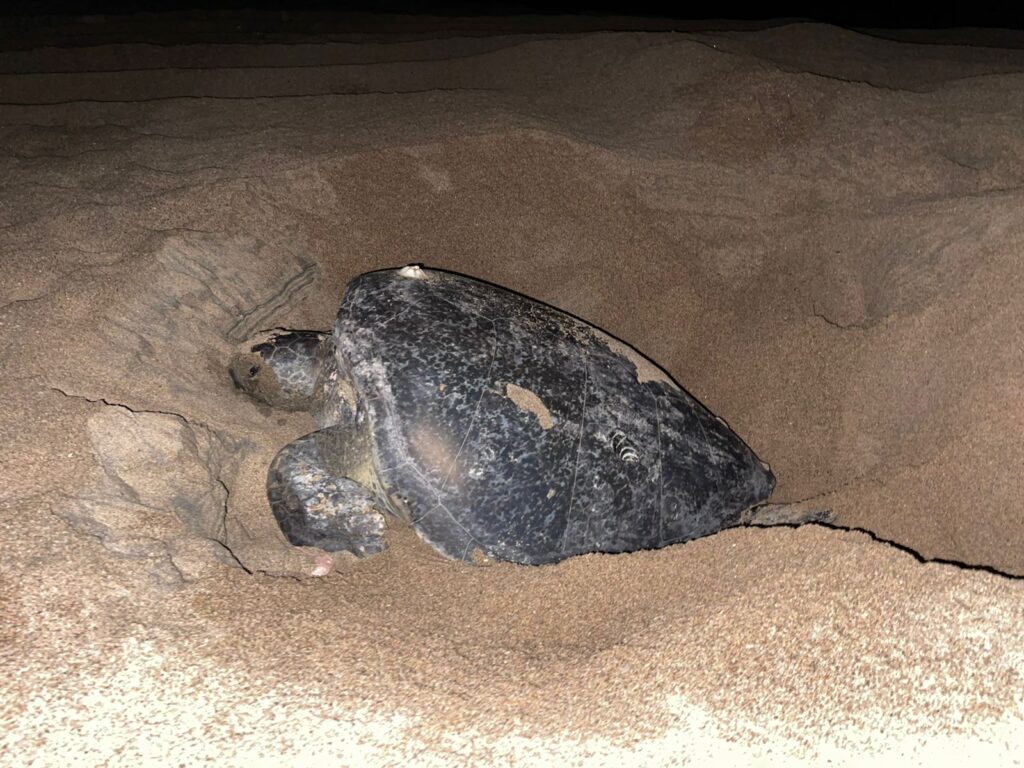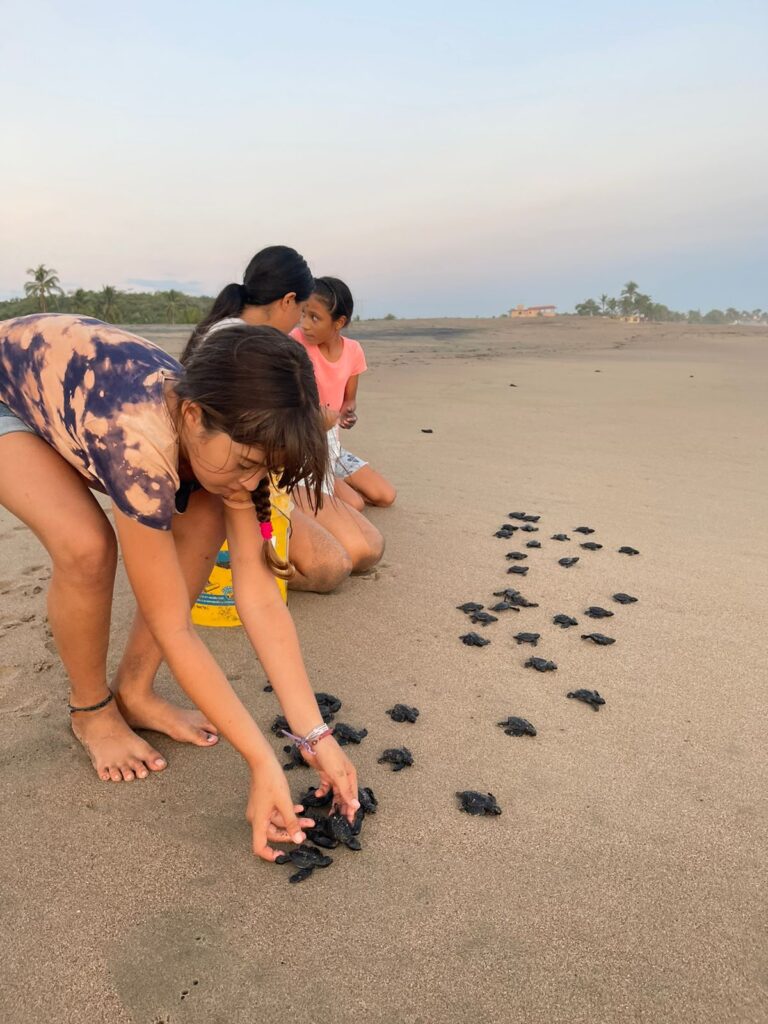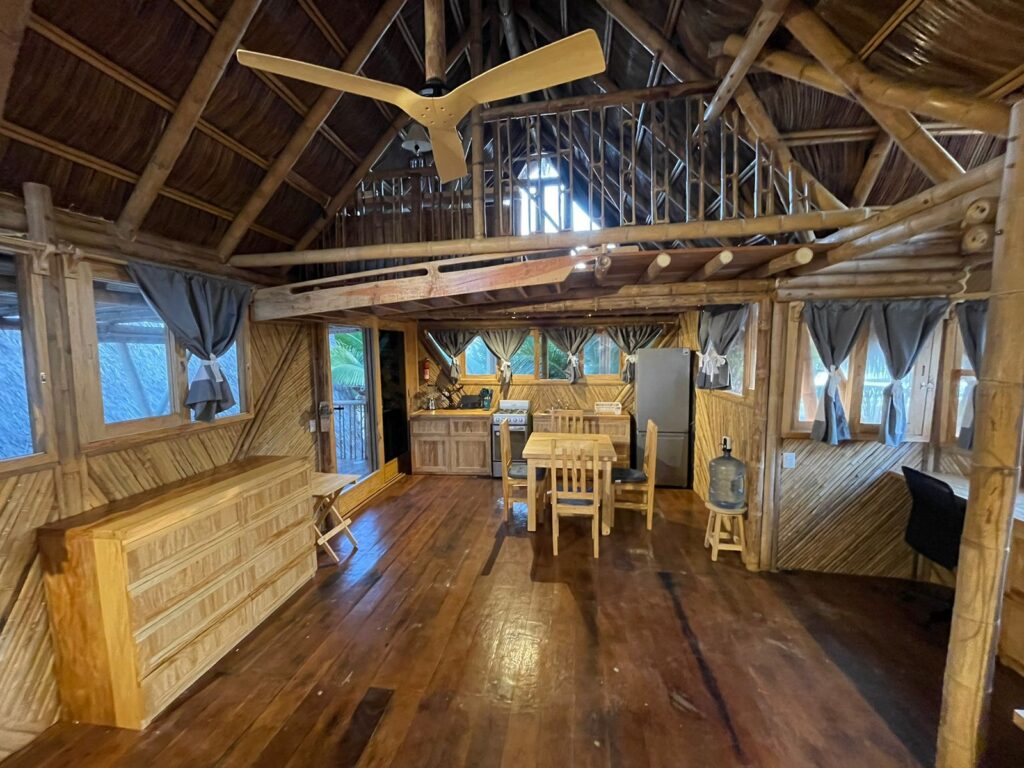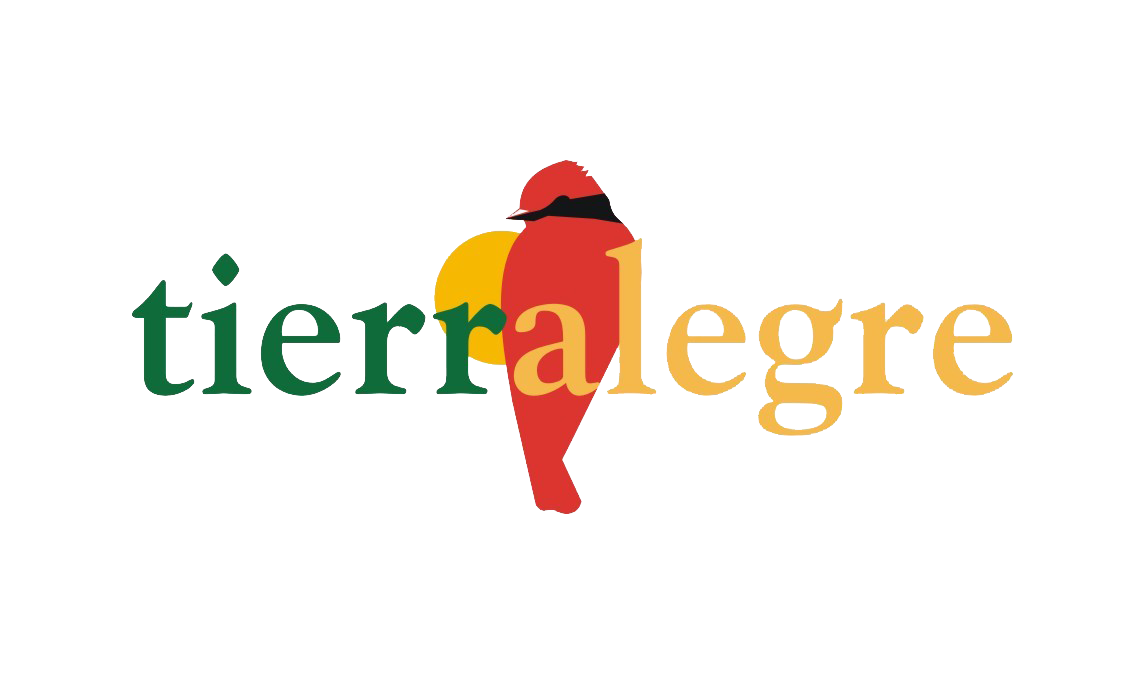The southern coast of Jalisco, La Costalegre, hosts four of the seven known marine turtles in the world:
- The Olive Ridley (Lepidochelys olivacea) pop ~ 800,000
- Eastern Pacific Green (Chelonia mydas) pop ~ 90,000
- Hawksbill (Eretmochelys imbricata) pop ~ 25,000
- Leatherback (Dermochelys coriacea) pop ~ 35,000
Tierralgre has supported sea turtle conservation for over two decades. The protection of these species present challenges that require a wide range of conservation measures. As breeding data suggests, the populations of sea turtles vary among species, some holding ample populations, while others are critically endangered. Quantifying the degree of species decline continues to be problematic. Male sea turtles do not leave the water during hatching season and their true numbers is poorly understood. However, since 90% of sea turtles are actually female, we can acertain populations by monitoring nesting female sea turtles along our coast.
Our sea turtle program seek to protect these species through monitoring, direct conservation and community outreach efforts. All sea turtles common to our beaches are endangered species; the Leatherback is “vulnerable” and the Hawksbill is “critically endangered”. Recent research suggests the Leatherback will become extinct within 20 years. Our monitoring and protection efforts are part of a global movement to protect and preserve these unique, remarkable ocean dwellers. Our collaborative program is joined by a conservation network along the pacific coast and is directed by Antonio Trejo Robles, Marine Biology Professor and Researcher at University of Guadalajara´s Melaque Campus and Director of La Gloria Sea Turtle Conservation Program.
Every fall, our staff and volunteers conduct nightly patrols of Playa Grande and Playa Chica to prevent active poaching and predation in the area. Eggs are retrieved from nesting sites as the turtles lay eggs and clutches are retrived to our secure location where they can safely incubate and hatch. Upon hatching, our staff and volunteers release the hatchlings at the water’s edge to prevent further predation. In addition, our staff conduct community outreach and host educational programs at local schools to change local perceptions of poaching. Data collected each year is provided to researchers at the Universidad de Guadalajara and shared with government regulatory agencies worldwide. In this manner, we are increasing populations and further species viability along La Costalegre.





support Sea Turtle Conservation
If you would like to volunteer & be involved with our Sea Turtle Conservation teams, visit us during the months of September through December when turtles are actively laying and hatching. Simply go to the Capacha Center’s website, www.CapachaCenter.com to book your stay and let us know you want to join the team.
You will be able to join research staff, students, and other volunteers on their nightly patrols, from 11:00 pm to 4:00 am, as well as bring hatchlings to the shore whenever they hatch. You will also get to participate in our education programs and learn more about Sea Turtle Conservation worldwide.
If you are a funder who would like to know more about our conservation programs, funding streams and grant programs, please see our Sustainability Plan or see the menu on our homepage.
